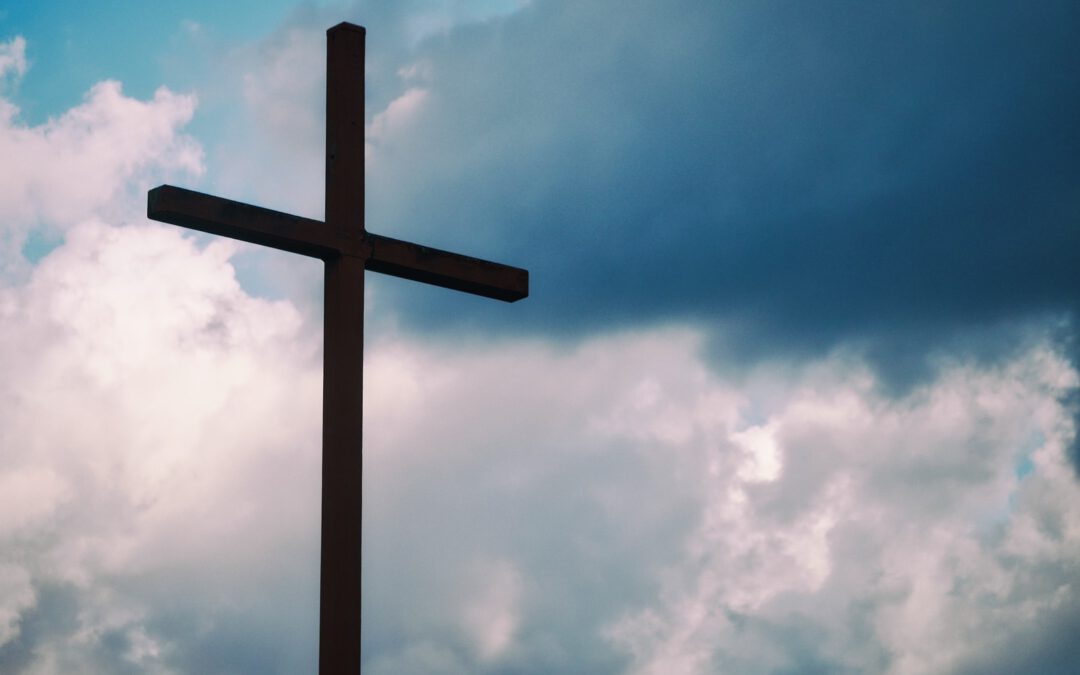
by Steve | Nov 22, 2019 | Magazine, Magazine Articles, Nov-Dec 2019
By Maggie Ulmer –
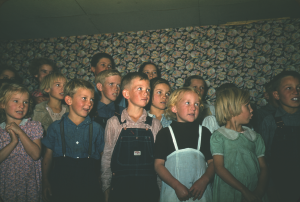
Children singing in Pie Town, New Mexico. Photo: Russell Lee. 1940 Farm Security Administration. Library of Congress.
There’s a song. An old hymn called “Give Me Jesus.” The words are to the point: “You can have all this world. Give me Jesus.”
When I think of what I wish most for my children, it’s that they would understand the profound truth of that simple lyric. We’re a clergy family so there’s no shortage of religion in our life, nor should there be — don’t mistake me. We’ve taught our sons the revelation of God’s truth in scripture since they were infants. They know the liturgy. They know the hymns. They know the prayers. They also know there are significant parts of their lives in Christ that their father and I cannot manufacture for them. Intimacy with the Lord is something they must increasingly pursue themselves. The revelation of Christ himself is encountered through relationship and without it the Christian life is not complete.
Paul writes eloquently of the importance of surrendering ourselves, body and mind, to the influences of Heaven and leaving behind our old identity for our divinely designed identity in Christ. “So in Christ Jesus you are all children of God through faith, for all of you who were baptized into Christ have clothed yourselves with Christ” (Galatians 3:26). No one is more emblematic of this transformation than Paul himself. His encounter with Jesus, on the road to Damascus found him unable to recognize the very God whose word he dedicated himself to understanding and defending.
Academic proficiency is not enough to tell us who God is, or who God calls us to be. We need revelation from God to fully understand God’s will and our calling within his will. This is not to say we don’t need study. We do. My children are homeschooled in part so we can spend dedicated time to studying theology. It is within Paul’s well established framework of knowledge that Christ himself reveals to Paul the prophetic clues of his Messiahship. Paul’s studious nature and deep understanding of the Law are paramount to the success of his calling to evangelize the Gentiles of the Roman world. I want my children to know that not only can they be shaped and nourished by scripture, but that they can receive even deeper insight and wisdom from Christ himself.
Entering God’s presence, inevitably illuminates our brokenness. Psalm 24 asks, “Who may ascend the mountain of the Lord? Who may stand in his holy place?” We may be tempted to think it isn’t right to seek God’s presence, or that, the occasional touch from the Holy Spirit is enough, that we shouldn’t be too greedy for him.
To that I say: “Have you ever been in his presence?”
Years ago at my husband’s first appointment there was a woman in the local nursing home who was no longer verbal except for one phrase: “Into the Garden!” She would yell. Lord help me; I’m not a fan of that hymn, but we sang it for her every time we visited. As we’d come to the refrain she’d close her eyes and cry:
“And He walks with me, and He talks with me / And He tells me I am His own/ And the joy we share as we tarry there/ None other has ever known.”
Through the new covenant of Christ’s blood we are given grace by the confession of our faith. We are adopted children of the promise. We belong to the Father, we bear his name and authority. We are forgiven and cleansed. We are new creations who may approach the throne of God with boldness. That is our identity in Christ. If we seek his presence, we’ll know that he calls us his own. I want my children to know they can encounter Christ himself and discover their greatest purpose in him, and the measure of God’s love and the possibility of their calling is not defined by their past sins.
Christians are sometimes wary of expressions of Christianity that emphasize experience and encounter over the word. Fair enough, caution may be advisable in those instances. We can’t understand God apart from scripture and most of us raised in the church began our relationship with God through the word. However, scripture itself suggests that habitual meditation on the word renews our minds not only in our ability to distinguish the lawful from the unlawful, but also the supernaturally sacred from the supernaturally profane.
Presumably this is because the writers of scripture correctly understood the world we inhabit is indeed a world of both natural and supernatural phenomena. When we reject biblical accounts of divine healing, the existence of demons, raising the dead, angelic visitations, or post resurrection appearances of Christ, as either primitive interpretations of naturally explainable events or, as no longer theologically viable in today’s church, we impugn principle objectives of Christ’s very coming. We render ourselves defenseless against the ceaseless waves of narcissistic spiritualism proliferated by culture. And absent the power of God, we arm our children with nothing better than philosophical moralism. As a church family we must press for more, so much more.
The world offers encounters and experiences every day that promise to satisfy the ache that comes with having eternity written in our hearts. St. Augustine names every human’s soul sickness when he says “Thou hast made us for thyself, O Lord, and our heart is restless until it finds its rest in thee.”
I want my children, I want all of our children, to meet the Lord. I want them have a revelation of their imperishable, undefiled, unfading inheritance in Heaven, today. I want them to know there is divine love that the world cannot hope to compete with.
Maggie Ulmer is one of the hosts of the Plain Truth: A Holy Spirited Podcast. She holds a degree in Classical French Cuisine from PA Culinary Institute, is the co-founder of a professional theatre company called The Hub Theatre, and is married to a United Methodist pastor.

by Steve | Nov 22, 2019 | Magazine, Magazine Articles, Nov-Dec 2019
By Philippe Kituka Lolonga –

Zacky Kabunga, president of United Methodist Men in Goma, Congo, counsels a group of children who live on the streets in South Kivu. Photo by Philippe Kituka Lolonga, UM News.
There are nearly 3,000 children and youth living on the streets in South Kivu. The United Methodist Church in Congo is working to build relationships – through evangelism, counseling, and other support – to help some of them find a better path.
“Men of God are called to help these categories of people because it is part of the mission of the church,” said the Rev. Clement Kingombe, pastor of Ibanda United Methodist Church in Bukavu, who has been working with the youth for two years. Oftentimes, the young people gather around places that sell alcohol and they cause trouble in the streets, he said.
Mbilizi Bonane, president of United Methodist Women in Bukavu, said it has become a real problem. “There are street kids criss-crossing and bothering us from day to day. They smoke along the way and take strong alcoholic beverages,” she said.
Luc Lukwangomo, head of the Office of Child Protection in the Provincial Division of Social and Humanitarian Affairs in South Kivu, said there are many root causes for the increase in “street children.” Family poverty, divorce, drugs, a lack of education, and armed conflicts in villages are some of the factors that lead young people to live alone on the streets, he said.
Most of these children are runaways ranging in age from 12 to 16 years old, Lukwangomo said, noting that South Kivu alone has 2,976 children who are in difficult situations and find themselves at different sites in the city and its surroundings.
Bonane said United Methodist Women is helping assist the children with food and other needs. In August, the group provided food for nearly 30 street children living in Bukavu. “As a church, we organize locally with our congregations to begin to get closer to these children who sow terror in the city of Bukavu,” she said.
Kingombe said there are opportunities to bring the young people into the church and show them a better way to live. “We go to various places to meet these children in street situations. We sensitize them to participate in our activities of the church. The first way is to bring them the Word of God, and if they accept, we invite them in the church to pray with us. But, some of them refuse,” he said.
Bisimwa Janvier, 15, is grateful for the church’s support. “I thank The United Methodist Church very much for the spiritual, moral, and sometimes material support. This is a feeling of love for street children,” he said.
Zacky Kabunga, president of United Methodist Men in Goma, works with a group of street children each week and said there are others who are beginning to accept help from The United Methodist Church. “It’s hard work that requires patience and also the courage to work with these kids,” Kabunga said.
Janvier said the teachings of United Methodist pastors have led him to let go of his “old habits,” which included stealing from people. “Today, I’ve just made a commitment to educate other street kids to leave this behavior behind,” he said.
At Kadutu United Methodist Church in Bukavu, two street children who were counseled by United Methodist pastors are now working for the church.
Shukuru Amos, 15, said thanks to Kingombe, who visited him regularly on the streets, he is now serving the church and singing in the choir. “I did not have a place to go, but today I live in the house of one the faithful of The (United) Methodist Church who accepted and welcomed us to his home,” he said. “Now, I’ll be willing to talk to other street children to join them to serve God.”
The Rev. Ibrahimu Sumaili, pastor of Kadutu United Methodist Church, hopes to raise awareness about the young people and their potential. “Our mission is to turn these children into disciples of God, so I commit myself each time to meet these children and talk with them,” he said.
The Rev. Ezekiel Mathe, a delegate representative for Bishop Gabriel Yemba Unda in the Kivu Conference, said it’s the church’s responsibility to lift up and encourage these young people to leave the streets and work toward a better future. “If no one is interested in them, if our eyes do not change with them, if we do not give them yet another chance to become like our children: educated, socialized, evangelized, and evolved in a healthy environment … we will prepare for a difficult future for the country and for the church,” he said.
Kituka Lolonga is the Kivu Conference communicator. Distributed by United Methodist News Service.

by Steve | Nov 22, 2019 | Magazine, Magazine Articles, Nov-Dec 2019
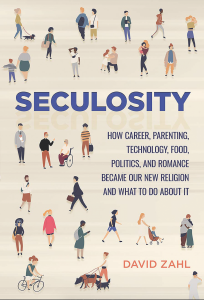 By Steve Beard –
By Steve Beard –
“When you pass through the waters. I will be with you; and when you pass through the rivers, they will not sweep over you. When you walk through the fire, you will not be burned; the flames will not set you ablaze. For I am the LORD your God …” (Isaiah 43:2,3).
Those were the life verses of Sally, the wife of photographer Jeff Rogers. When she died in 2007 after a battle with cancer, Jeff felt as if his heart was irreversibly broken. “But to my surprise,” confesses Rogers, “something new began to happen. Scripture became more alive to me than ever before. Readings from the Psalms became clearer and more significant; in my grief and suffering the words jumped off the pages.”
Rogers’ new book Streams in the Desert features scriptural passages on suffering and hope along with 80 pages of his phenomenal images captured from around the globe. Elegantly done. (JeffRogers.com.)
Are Americans losing their religion – or simply replacing it with the orthodoxies, rituals, and dogmas of career, parenting,  technology, food, politics, and romance?
technology, food, politics, and romance?
“Bombarded with poll results about declining levels of church attendance and belief in God, we assume that more and more people are abandoning faith and making their own meaning,” writes David Zahl in his insightful new book, Seculosity. What these polls actually tell us, believes Zahl, is that “confidence in the religious narratives we’ve inherited has collapsed. What they fail to report is that the marketplace in replacement religion is booming. We may be sleeping in on Sunday mornings in greater numbers, but we’ve never been more pious. Religious observance hasn’t faded apace ‘secularization’ so much as migrated … ”
As analyst of the contemporary religious scene, Zahl mixes the kind of grace and smarts that fuels his website Mockingbird (mbird.com).

by Steve | Nov 22, 2019 | Magazine, Magazine Articles, Nov-Dec 2019
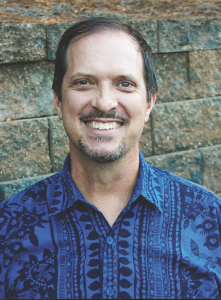 By Jim Ramsay –
By Jim Ramsay –
Migration – the movement of peoples around the world – has been going on since the beginning of time. Due to the intense political debates recently over immigration policy, many in our nation – and in our churches – risk seeing only a very narrow view of the larger phenomenon. Of greater concern, we can risk missing where the hand of God might be in the movement of peoples. Is it possible that migration is actually one of the ways God is fulfilling his mission? If so, perhaps we should be paying closer attention to ways that we can understand and participate in his mission among human populations on the move.
According to recent United Nations statistics, about 260 million people now live outside of their countries of origin. The migration of people is a global phenomenon. The United States is still the largest recipient of international migrants (19 percent of the total), and yet there are huge movements within continents, especially in Africa and Asia, where 80 percent of migration remains on the continent.
Although refugees represent a highly vulnerable and needy population, they comprise less than 10 percent of the overall population of global migrants. It is important for churches to consider how to offer the love of Christ to refugee populations, but most immigrants are not in that category. (For local congregations, World Relief is an excellent resource for churches wanting to learn to engage with refugee populations.)
Migration plays a significant role all throughout the Bible. In the Old Testament it is often in the context of migrations that God revealed himself to his people. In the New Testament the early church was formed on the streams of migration.
Given that most immigrants who come to the United States actually come from Christian backgrounds, it behooves local congregations to ask: How might we in host-culture churches connect with these newer communities? What can we learn from them? How might we partner together for God’s Kingdom in our communities, our nation, and beyond our borders? What might this look like practically? Here some first steps:
Awareness – Who is around you? The U.S. Census web pages provide a wealth of information. For example, I discovered that 25 percent of my county in Georgia (Gwinnett) was not born in the United States. Your church can do this kind of simple research and find out about these communities.
Prayer – As awareness comes, make it a matter of strategic, concerted prayer for the Lord to guide your community. Pray for divine appointments and for mutual understanding.
Connection – Meet with leaders of some of the local churches you discovered in your survey. If you have first- or second-generation international immigrants in your church, perhaps they can share about their experience and their communities.
Cultural Bridges – Identify people in your congregation who can be “cultural bridges” to help connect with communities around you. These can be people from the host culture who have lived and served cross-culturally themselves, or those who navigate both cultures.
Training – Basic understanding of cultural concepts and cross-cultural communication can be vital to building community with people from other backgrounds. It also can help build empathy among those who have never had the experience of being uprooted, living in an unfamiliar setting, or being a minority. Mission agencies can be a resource here.
Followers of Christ can certainly have varied opinions on proper government action in relation to immigration. But we need always to ask, What might God be up to? We then need to consider how we can connect to that. The presence of diverse communities throughout our nation, many of them from Christian backgrounds, presents us with such an opportunity to explore how God might be advancing His kingdom through people on the move.
Jim Ramsay serves as vice president for global operations at TMS Global (www.TMS-Global.org). Through its Activate process, TMS Global can help your church deepen its missional impact locally and globally.

by Steve | Nov 22, 2019 | Magazine, Magazine Articles, Nov-Dec 2019
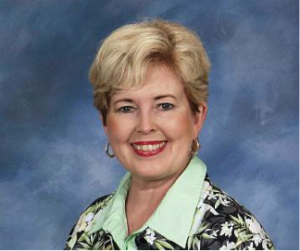 By B.J. Funk –
By B.J. Funk –
For years, a man had stayed at the side of the pool of Bethesda, waiting with many other disabled folks for a chance to get into the water. It was thought that the pool of Bethesda held healing powers, and that when the miraculous water bubbled, the first one in the pool received healing. But this man, identified in John 5:2-9, was not able to move without help. Someone had to carry him to the pool in the morning and come back for him in the afternoon.
By the side of the pool, he had been so close, yet so far away from victory. He felt defeated and helpless to make the move into the bubbly healing waters. He was identified by his defeat. Hopeless Man. Forgotten Man. Lame Man.
He had been ill longer than the years Jesus lived on earth. Jesus died at 33, and this man had been ill for 38 years. But this new day would be different because Jesus happened to walk that way, compelled to stop and speak to this one stuck by the side of the pool. Jesus asked a question that penetrated into his soul.
“Do you want to get well?”
“Sir,” the man replied. “I have no one to help me in the water. While I am trying to get in, someone else gets in before me.”
Jesus said, “Get up. Pick up your mat and walk.” Immediately, this man was healed.
The mat that had held him for 38 years now became the mat that he held. The man who had been helpless was now hopeful. The Forgotten Man was now noticed. Jesus’ command to “Get up,” reached far into this man’s soul. He made the effort. He got up. He had a new name. Healed Man.
William Barclay writes, “Here is the road to achievement. There are so many things in this world which defeat us. When we have intensity of desire and determination to make the effort, hopeless though it may seem, the power of Christ gets its opportunity, and with Him we can conquer the things that for a long time have conquered us.”
As long as he was lying on a mat and not bothering anyone, he was not a problem for anyone. However, as soon as the religious folks learned he was carrying a mat on their holy day, he was immediately a problem. The rules of religion collided with the grace of God, and what should have been a beautiful moment was tarnished with tradition.
Loud words of “We don’t do that!” jumped all over Healed Man as religion pushed through, over, and around his miracle.
“It is the Sabbath! The law forbids you to carry your mat on the Sabbath!”
The United Methodist Church has been stuck by the side of a pool, lying on mats of difficulty and differences for more than 38 years. But, now we have picked up our mats of uncertainty and moved into the encouraging bubbly waters of grace.
As long as we have been lying on our mat and not bothering anyone, we posed no threat to anyone. However, as soon as we starting carrying our mats, others were not pleased. Different opinions clashed as we struggled to keep our beloved church afloat.
Then, Jesus comes along and asks the church, “Do you want to get well?” Something about that question reached deep into our soul.
We do. We are. We want our mats to hold us no longer. We feel confidence as the waters stir and the bubbles rise to the top. We are ready, with Christ, to conquer those things that for a long time have conquered us.
The healing waters of Bethesda show no partiality. Its miracle is for all United Methodist Christians.
You are invited. Come on in. The water is fine!
![Indianapolis Plan and Amicable Separation]()
by Steve | Nov 22, 2019 | Magazine, Magazine Articles, Nov-Dec 2019
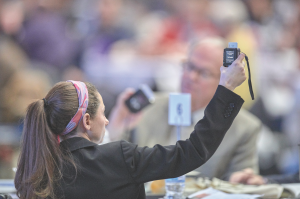
A delegate holds her voting device aloft on the last day of a Special Session of the General Conference of The United Methodist Church, held in St. Louis, Missouri. Photo by Paul Jeffrey, UMNS.
By Thomas Lambrecht
On September 18, the conversation group working on the Indianapolis Plan submitted the final version of a plan for an amicable separation in The United Methodist Church. As the document states, “We seek to move away from the caustic atmosphere which has often marked conversation in the United Methodist Church into a new season where we bless one another as we send each other into our respective mission fields to multiply our witness for Christ.” This plan (of which I am one of the authors) envisions the UM Church giving birth to new denominations of United Methodism.
• A Traditionalist UM Church would maintain the current stance of the Discipline regarding same-sex marriage and the ordination of LGBT persons.
• A Centrist UM Church would remove all the restrictions related to same-sex marriage and LGBT ordination, allowing individual annual conferences and local churches to make those decisions (essentially a “One Church Plan” denomination).
• A Progressive UM Church that celebrates and mandates same-sex marriage and LGBT ordination in all its churches could form immediately, and/or progressives could find a home in the Centrist UM Church.
• Other denominations could be formed by any annual conference or group of 50 congregations.
These new denominations would be separate from one another, with different Books of Discipline, separate finances, and different theological perspectives. However, all would share a common Wesleyan, United Methodist heritage and doctrine. Each could use the name “United Methodist” with a modifier to distinguish it from the other denominations. Each could use a version of the cross and flame logo modified to fit their particular denomination.
What are the unique values and advantages of the Indianapolis Plan?
It is the only plan that was crafted by persons representing diverse theological perspectives. The group contained five traditionalists, five centrists, and two progressives. (Attempts were made to enlist more progressives, but those approached were unable or unwilling to participate. However, progressive groups were consulted as the plan developed.) As such, this plan seeks to take into account the values and interests of all three groups. It represents a compromise among the three for the sake of ending the fighting and helping the church move into a positive and fruitful future.
The Indianapolis Plan is supported by the leaders of the Wesleyan Covenant Association, the Confessing Movement, Good News, and UM Action/IRD. At the same time, the plan was not drawn up by these traditionalist groups. Instead, it was formulated in negotiations among diverse participants mentioned earlier.
It is the only plan that seeks division/separation rather than expulsion. By now, the leaders of all three groups – traditionalists, centrists, and progressives – have publicly stated that separation of some kind is the only way to move forward in a positive direction. Most other plans, however, envision a forced departure of one group or another from the church. The UMC Next Plan would essentially force traditionalists to leave the UM Church by changing the church’s definition of marriage and allowing LGBT ordination. Continuing to perfect the Traditional Plan by increasing accountability and closing loopholes would essentially force progressives to leave the UM Church or be subject to complaints and disciplinary procedures.
Only the Indianapolis Plan treats all perspectives equally, forcing no one to “leave” the church, but at the same time creating new denominations and allowing anyone to choose which new denomination to be part of. Nowhere in the plan is this more clearly seen than in the ability of central conferences, annual conferences, and local churches to make the decision on which denomination to align with by majority vote, rather than a super-majority (2/3) vote. If one group is “leaving,” a super-majority vote would make sense. But if all are choosing between equal alternatives, then a majority vote is more appropriate. Under the Indianapolis Plan, there are no winners or losers, people “leaving” and people “staying.” The plan attempts to treat all parties equally.
The Indianapolis Plan does not dissolve The United Methodist Church, but provides for its legal continuation through the Centrist UM Church. This is necessary in order to avoid constitutional amendments, which would require a 2/3 vote of General Conference and a 2/3 vote of all the annual conference members. This plan can be passed by a majority at General Conference and implemented immediately, rather than having to wait up to two years for the ratification vote. Legal continuation of the UM Church is also necessary because of legal issues that may need to be cared for in the process of separation that we may not even be aware of at this point.
But the Centrist UM Church will not simply be a continuation of The United Methodist Church as it currently exists. It will “do business as” the United Methodist name with a modifier. It will change its 48-year moral teachings and requirements around LGBT persons. It will consider making the United States its own central conference, able to adapt the Discipline differently in the U.S. than in other countries. It will undoubtedly change its structure to address the loss of perhaps one-third of its U.S. membership. Even the UMC Next Plan (from the centrists and progressives) envisions the creation of a “Commission on the 21st Century Church” that would “prepare a comprehensive structure and governance plan” to be enacted by a future General Conference. The Centrist UM Church will be in this sense a new denomination.
The Indianapolis Plan seeks to minimize the need for local congregations to vote as much as possible. Taking ideas from the Commission on a Way Forward proposals, this plan envisions central conferences and annual conferences voting on which denomination to align with. Only those local churches disagreeing with their annual conference alignment would need to vote. Because the General Conference cannot mandate that central conferences and annual conferences vote, the plan provides that U.S. annual conferences that do not vote would automatically become part of the Centrist UM Church. Central conferences and annual conferences outside the U.S. that do not vote would automatically become part of the Traditionalist UM Church. These defaults were determined based on our understanding of where most annual conferences would probably end up.
At the same time, it will be easy to trigger a vote in an annual conference. If the annual conference does not announce its intention to vote, any member can make a motion during the session of annual conference that it does take a vote. If the motion passes, the conference would have to take a vote. In addition, the plan allows the annual conference itself to call a special session of the annual conference if needed in order to take such a vote on alignment.
If the goal is to gain support across the theological spectrum for a fair and equitable plan that allows the different parts of the church to move easily into new denominations that can operate independently based on different theological perspectives, the Indianapolis Plan is best suited to accomplish that goal.
All denominations formed under the Indianapolis Plan could use (but are not required to use) the “United Methodist” name with a modifier to distinguish one denomination from another (e.g., Liberationist United Methodist Church, United Methodist Church of the Philippines). The use of the name is not important for many United Methodists in the U.S. However, it is an extremely important issue for some in the central conferences outside the U.S. In Africa, the United Methodist name is a well-established and trusted brand that opens doors and protects the church from capricious governmental actions that might threaten the property or ministries of the church there. They also told us how difficult, cumbersome, and expensive the process is to change a corporate name. We heard from many that they could not support a plan that would require them to change the name of the denomination they are part of. The same is true of the cross and flame logo, which is widely used in Africa and the Philippines to demarcate the United Methodist Church brand. Denominations could continue to use (but are not required to use) the logo with modifications to distinguish one denomination from another.
The Indianapolis Plan provides a new, less costly way to handle pension liabilities. Rather than require an up-front payment of pension liabilities (as in the current local church exit provision), this plan allows Wespath to reallocate those liabilities to the new denominations based on which annual conferences, local churches, and clergy choose to align with each denomination. We engaged in extensive conversation with legal experts at Wespath about how to handle pensions. They were eager to cooperate (without implying any endorsement of our plan) and provided significant legal language for the Indianapolis Plan legislation that they believe addresses the concerns over pensions. Since the money for unfunded pension liabilities may never be needed, it makes more sense to transfer the liability, rather than requiring churches and annual conferences to pay the liability up front. Local churches that withdraw to become independent would still be required to pay for unfunded pension liabilities before withdrawing.
The Indianapolis Plan envisions a General Conference-approved equitable plan for allocating general church assets among the resulting new denominations. While the UMC Next Plan proposes the gift of some financial resources to a new Traditionalist UM Church, the Indianapolis Plan envisions an equitable division of general church assets among all denominations formed in this process. Such a division of assets would not require any boards or agencies to be dissolved or any property to be sold. Rather, liquid assets and investment properties could be divided proportionally based on membership. Where there are donor restrictions on assets, those restrictions would be maintained. While the Indianapolis conversation group did not have time to agree upon a formula for allocating assets, different groups have submitted proposals for how such an allocation might be done. The General Conference and its legislative committee will determine how the process would work. The group agreed that disputes would be settled by appeal to an arbitration board, making any resort to civil courts or lawsuits unnecessary.
The Indianapolis Plan offers a short timeline, allowing expeditious movement into the new denominations for those who are ready, while leaving the door open for alignment decisions for the next eight years. The plan envisions annual conferences making alignment decisions before the end of 2020, with local churches that disagree making their decisions by mid-year 2021. General Conferences forming the new denominations would take place in fall 2021. The new denominations would be fully functional under their new governing documents on January 1, 2022. This timeline allows the new denominations to form and get on with ministry, rather than being mired in the decision-making process. At the same time, annual conferences or local churches (more likely) could change their alignment through the end of 2028. This allows those who are not ready to make a decision right away to live into the possibilities and make a decision later. However, no annual conference or local church could take a vote to reconsider its alignment unless three or four years had passed since its previous vote on the matter.
The Plan creates an interim implementation for those ready to move immediately into a new denomination. Annual conferences and local churches that make a quick alignment decision could begin to live under their new denomination beginning August 1, 2020, on an interim basis. In addition, jurisdictions would be encouraged not to elect new bishops in 2020 but wait until 2021 or 2022 to do so, based on the annual conferences that remain in the Centrist UM Church. This would avoid having a surplus of bishops who do not have an annual conference in which to serve. Central conferences would likely not see any change in their annual conference alignments and could elect bishops as planned in 2020.
The interim implementation will allow immediate change to how churches and annual conferences function, in order to curtail further conflict. Traditionalists would immediately be free of the pressure to change their position on marriage and sexuality and could begin moving in a robustly proactive ministry direction. At the same time, centrists and progressives would immediately be free of complaints, trials, and disciplinary processes over same-sex weddings or the ordination or appointment of self-avowed practicing homosexuals.
Some have pictured amicable separation as a divorce. Our group has instead pictured this process as The United Methodist Church giving birth to new children. The UM Church as it has been will exist no more. But it will exist through the new denominations that inherit the characteristics of the parent denomination. Each of the “children” will be different from each other. But they will all be part of the United Methodist family and heritage.
The underlying motive for taking this path is to broaden and multiply the mission of the church. As different denominations, we will be able to reach more people with the good news of Jesus Christ, make more disciples, and see more ways in which the presence of God’s Spirit transforms the world. We will be able to focus our energies and resources on mission and ministry, rather than fighting, power, and control. Each new expression of the church will be able to reach people that the other denominations cannot reach.
As the plan states, “We envision an amicable separation in The United Methodist Church which would provide a pathway to new denominations of the Methodist movement so we can all make new disciples of Jesus Christ for the transformation of the world. These new denominations, though separate, will continue the rich heritage of the Methodist movement while being free to share their respective witnesses for Christ unhindered by those with whom they have been in conflict. We will release one another to joyful obedience to Christ’s call on our lives.” May it be so.
Thomas Lambrecht is a United Methodist clergyperson and the vice president of Good News.




 By Steve Beard –
By Steve Beard – technology, food, politics, and romance?
technology, food, politics, and romance? By Jim Ramsay –
By Jim Ramsay – By B.J. Funk –
By B.J. Funk –